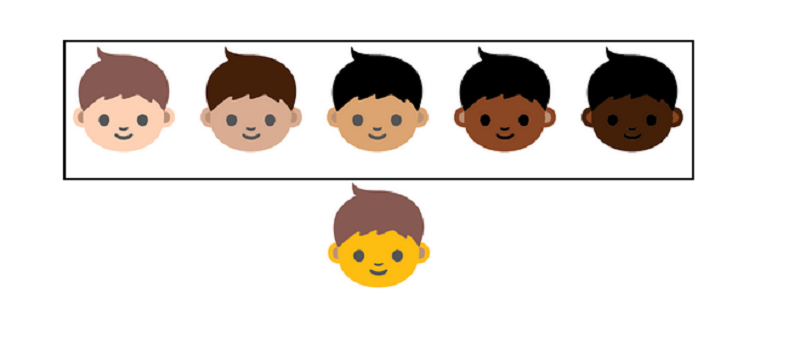
Emoji are colorful icons baked into the on-screen keyboard of most smartphones that allow users to express a number of words and ideas through pictographs. These including birthday cakes, rainbows, cats, dogs, pizza, and emotions — if you’re content with a very Caucasian-looking avatar representing your feelings. After years of enduring mostly white faces on their keyboard, people who identify with other skin tones will be able to choose from a broader selection of emoji that better reflect the diverse palette of human skin tones; a new draft proposal published in early November by Unicode Consortium introduces new features to reflect this.
To understand exactly what emoji are, we’ll have to step back in 1999. Emoji first appeared in Japanese mobile phones around 1999 and grew extremely popular over the next few years. When non-Japanese email and phone vendors started to support email exchange with Japanese carriers, there was no way to represent these icons in Unicode, the text standard in all modern software. After the icons grew extremely popular internationally, Google took the responsibility of converting Japanese emoji into Unicode in 2006 to create a standard.
Currently, emoji can be portrayed in two states depending on what the environment requires. For example, there’s color representation (the graphic that we currently see) or black and white representation (text representation), meaning that emoji can be triggered by a string of text, but end outcome of this string is up the artists employed by the individual app.
Building on these two techniques, Google software engineer Mark Davis and Apple software engineer Peter Edberg proposed a new system that functions by combining existing emoji with a smaller set of colors on the back-end so that a new color will be produced on the front-end.
Davis suggests the creation of five new color, representing different skin tones, that when combined with existing emoji, will create a brand new image with a specific skin color. For instance, combining a boy face with the brown swatch will render a boy with brown skin and a darker hair tone. But if a human emoji is not followed by a specific modifier, than it will render a non-realistic skin tone such as Simpson’s yellow rather than “white.”
The primary disadvantage of the new system is that it places the burden of rendering the proper diverse character on to the user, rather than allowing said user to select from a category of presets. If the user doesn’t know a broad range of strings to recall criteria he or she is looking for, then they’ll be stuck as “yellow.”
While some may laugh this off as a trifle first-world problem, the fact of the matter remains that Unicode is a worldwide computing industry standard for the consistent representation of text, and as a result, should be updated to reflect its worldwide interest, not continue alienating a portion of its audience with little options that amount to nothing more than stereotypes: “man with turban” or “man with gua pi mao and Manchurian mustache.” The internationalization and localization of computer software is tied to Unicode’s success at unifying character sets.

Advertisement
Learn more about Electronic Products Magazine





